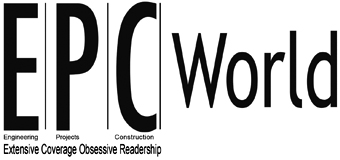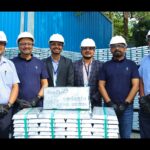The future of construction is houses built in factory, says Sidharth Bansal, Director, Magicrete Building Solutions
The ongoing Pandemic has badly battered the economy. Does infrastructure hold the key to revive the Indian economy? Your views
Covid-19 has affected communities globally, and while governments and companies globally are responding fast, much remains to be done. India's real estate sector, which supports almost 250 allied industries and contributes over 13% of GDP, was recovering from an extended slump, has again been dragged into a slowdown by the Covid-19 pandemic. Initially, many were concerned about the construction workers migrating to their villages for an unspecified amount of time, making it difficult to meet project delivery timelines. However, on the positive side, India's recovery in the construction sector was V-shaped after both the first and second waves of COVID-19. This shows the strength and resilience of the construction ecosystem.
How are you adapting to the 'New Normal'?
Due to the Covid-19 pandemic, the construction sector dealt with a severe blow and showed adaptability and resilience could turn things around. Industries are moving to faster and innovative methods of construction. Technology and innovation adaptation in the sector, now, will be fast-paced and inevitable to mitigate the risks associated with such unprecedented events. We at Magicrete are promoting AAC blocks / AAC panels and precast products, which increase the speed of construction from anywhere between 4 times to 16 times depending on the usage. Customer interactions have become more virtual compared to earlier. The faster adoption of newer technologies is making labor more efficient and productive. Real estate construction is probably the last major area in the world where even after the 4th industrial revolution, much work is still done at sites and not at factories. This shift from site to the factory is happening, and Covid -19 will increase the speed of this transition.
How can the government assist the real estate construction industry in this Pandemic time?
The real estate construction industry has always played a critical driver of the nation's economic growth and plays a crucial role in contributing to its GDP. Before the pandemic, the real estate construction industry maintained its momentum despite the ups and downs. However, it came to a halt when the first lockdown was announced last year, with a sudden dip in interest in investing in real estate. Interestingly, the market has bounced back in the past couple of months, especially with recovery measures like government initiatives to reduce housing loan interest and the developers providing attractive pricing schemes. As a result, people are spending more time at home now, so they are looking to upgrade their lifestyle, and potential homebuyers are aiming to own a house to suit individual/family interests. This is stimulated by work-from-home and study-from-home options along with the discounted pricing of residential estates. Builders are enticing clients with discounts and other engaging payment systems by learning from the new environment and the rising inventory of ready-to-occupancy properties. This, along with government initiatives like cheaper home loan rates, came together as an ideal package for potential homebuyers. The Covid-19 pandemic has severely affected the marginalized sections of society, including 8.5 million construction workers. Considering that these people may find it challenging to meet their own needs and the needs of their families, the government had directed states to use the Rs 31,000-crore welfare fund for construction workers to help them. Vaccination drive can be expedited to cover all the construction workers in the next 1-2 months as they are one of the most exposed segments of the population, and social distancing norms are difficult to follow.
What sustainability initiatives have you included in the project that you undertake to save the environment from further degradation?
At Magicrete, we believe in a triple-bottom-line approach where Social & Environmental impacts are valued as much as economic value added. On the social front, Magicrete employs close to 1000 people, including on-roll and contractual employees. We were a part of the TCS CSR initiative on Swachh Bharat Abhiyan, wherein we installed precast toilets in 1500 girl schools in Andhra Pradesh. On the environmental and sustainability front of our product, AAC Blocks consume 70% less energy & resources than clay bricks, reducing carbon footprint. In India itself, AAC Blocks can avert 200 mn tons of CO2 emissions into the environment. AAC Blocks use waste fly ash instead of top layer agricultural clay soil, thereby preventing millions of hectares of agricultural land from being rendered useless.
Covid-19 protocol, such as 'minimum contact,' has further expedited Digital initiatives to contact all the project stakeholders. What are the digital initiatives you have taken in this regard?
Real estate is considered a favoured lifetime investment as the risk factor is lower than other investment options. Interestingly, with the current market performing at lower prices and more builders moving to digital platforms, there has been an increase in demand within India and the NRI market. As we are beginning to see recovery in the Indian real estate industry, the unfortunate timing of the second wave of Covid-19 caused a temporary dip in the interest to buy and sell properties. However, the increased adoption of digital media tools, notably since last year, could potentially bring huge potential for the real-estate construction sector to handle this situation better. Digital transformation in the construction industry is essential to meet the future infrastructure needs that have become more prominent during the coronavirus global crisis. The pandemic has indeed made everything digital-first than ever before. Developing technologies have developed the online home buying experience favourable for consumers via virtual house tours, home video reviews, and digital real estate expos, amongst others. In fact, our honorable Prime Minister Narendra Modi took updates on our Light House Project at Ranchi through a drone tour provided by our Precast President. In the same way, such video tours by the builders help build credibility with property seekers and give them a sense of having visited the site from the comfort of their homes.
Similarly, the industry players must invest proportionately in culture to disintegrate risks related to remote work and apprehension across the workforce regarding job security & productivity. Moreover, this is the best time to up skill the entire workforce & require training on new tools & technologies (such as BIM) and operating procedures. Many of these activities will benefit the employees by encouraging greater engagement amongst one another. Cloud platforms developed for BIM model management and the integration of digital technologies in the construction industry can now be used as a good surveillance and control system for construction sites and workplaces to contain the Covid-19 risk and improve safety protocols to minimize the risk contagion. Thanks to such innovative digital tools, supervision and control procedures and practices help prevent and contain the Covid-19 transmission risk.
In addition, to minimize the possibility of infection, this solution increases the productivity of the whole system thanks to the exchange of information and digital documentation between the various company departments. To build better, we must modernized business processes. This often begins with information flow – we're beyond the days of blueprints being blue and the stakes high to stay on track by staying true to the designs. Businesses are assuring this by digitizing designs, using 3D modeling software on iPads to guide the field. Covid-19 has changed several things about construction, from what we prioritize in office and home construction to additional safety precautions businesses must adhere to in an already hazardous industry. Introducing robotics and off-site fabrication reduces some of the newer risks employees face and enables businesses to keep up with the demand for housing.
How are you overcoming skilled manpower shortages?
Manpower shortage is an ongoing trend that we are currently witnessing across the construction industry. While it has been estimated that the sector is likely to grow by 12 percent by the end of 2026, the problem of a labor shortage is expected to shoot up to around 60% as a large section of the available workforce is choosing other lucrative industries over construction. Dealing with the mismatch between the project demand and labor supply can be challenging in such a case. Over the past few years, the Indian real estate industry has increased the demand for construction workers by manifold; with several projects stalled in the cities, developers are struggling to retain the manpower and are thus left with ample vacancies to fill construction sites. These are some of the ways followed by Magicrete to overcome the manpower shortages.
- The construction industry has always been slow to adopt new technology to optimize construction schedule & increase efficiency. However, with the increase in the supply and demand of skilled workforce, it is time to embrace new construction methods. From Drones to Artificial Intelligence & Virtual Reality, technology has come a long way to minimize the impact of labor shortage in the industry.
- Use of Precast technology like MagicPod is also one of the ways to solve the labor problem. Under this, the majority of the building parts are made in far-flung areas where labor shortage is less than the urban areas. The parts are then assembled and transported to the construction site. As compared to the onsite work, a precast factory employs laborers throughout the year. This is one of the efficient ways to minimize the requirement for laborers on site.
- To retain the unskilled manpower, the construction companies should develop the skills of their current manpower, especially the workers, like the masons and the carpenters. Regular training of the workers must ensure that they earn more than what they can earn with their present skills. In short, the earnings need to be enough to attract the masses and lure them to move out of their villages to the urban areas.
- From walling products to modern construction technologies, the developers should increasingly adopt ways to reduce their alliance on high-cost skilled labor. For instance, the use of our MagicLite – ALC Wall Panels not only helps fasten the process of wall construction and finishing but also reduces the workforce requirement and speeds up the construction process by up to 16 times as compared to Red Clay Bricks.
All these steps will help developers move past the labor shortage issue and help them have the edge over the competitors in the market.
How do you see the economy, opportunities, and challenges in this pandemic situation, and please give us a brief idea about the strategies outlined to tap into future potentials?
Magicrete has constantly been aware of the evolving scenario and requirements of the industry. We have continually upgraded ourselves at every stage, adding new service divisions and introducing technology to serve our clientele efficiently. Agility and innovation are at the core of our organizational approach. Despite the intermediary setback due to the coronavirus pandemic, India's growth story stands intact. As the country's economic growth resumes its upward curve, the need for supporting infrastructure will be even higher. Magicrete plans to remain aligned with that growing demand in the construction space by delivering end-to-end solutions. We are India's frontline manufacturer of lightweight concrete (AAC) blocks, a technology that has turned over a new leaf in the construction industry. We were found with the vision of helping people build their homes better, faster & cheaper by use of innovative construction technologies. With the immense success of our flagship product, AAC Blocks, Magicrete has, over the years, ventured into a wide range of construction solutions, including Wall Panels, Construction Chemicals & Modular Buildings. Magicrete products over the past decade have been used to build over 5 lacs+ homes. Already among the top 3 players in the AAC Blocks industry (an industry with over 100 players), we intend to double our capacity over the next 5 years to become India's largest block/brick manufacturer.









